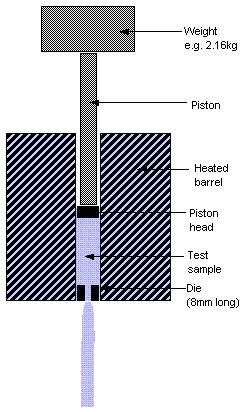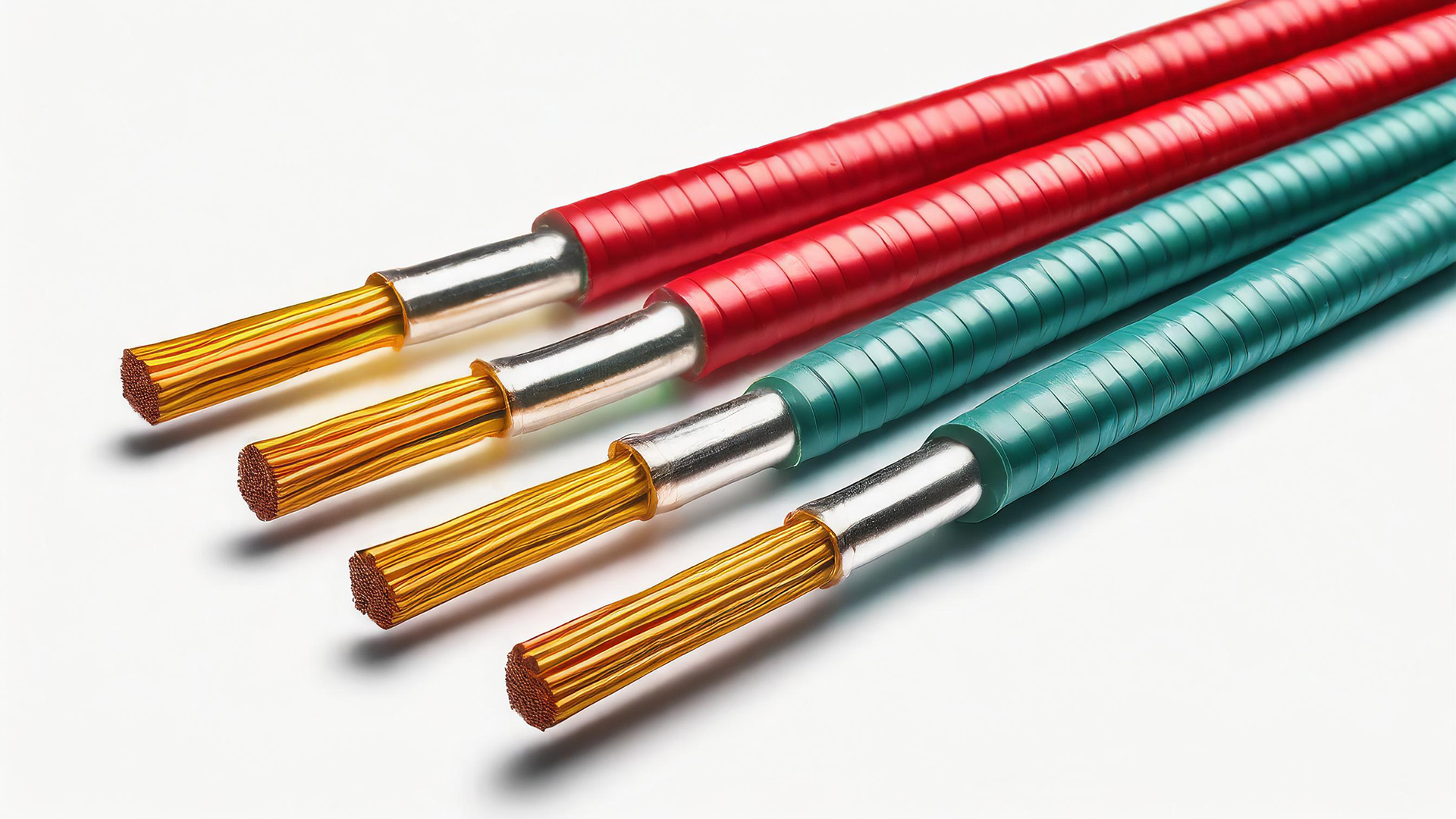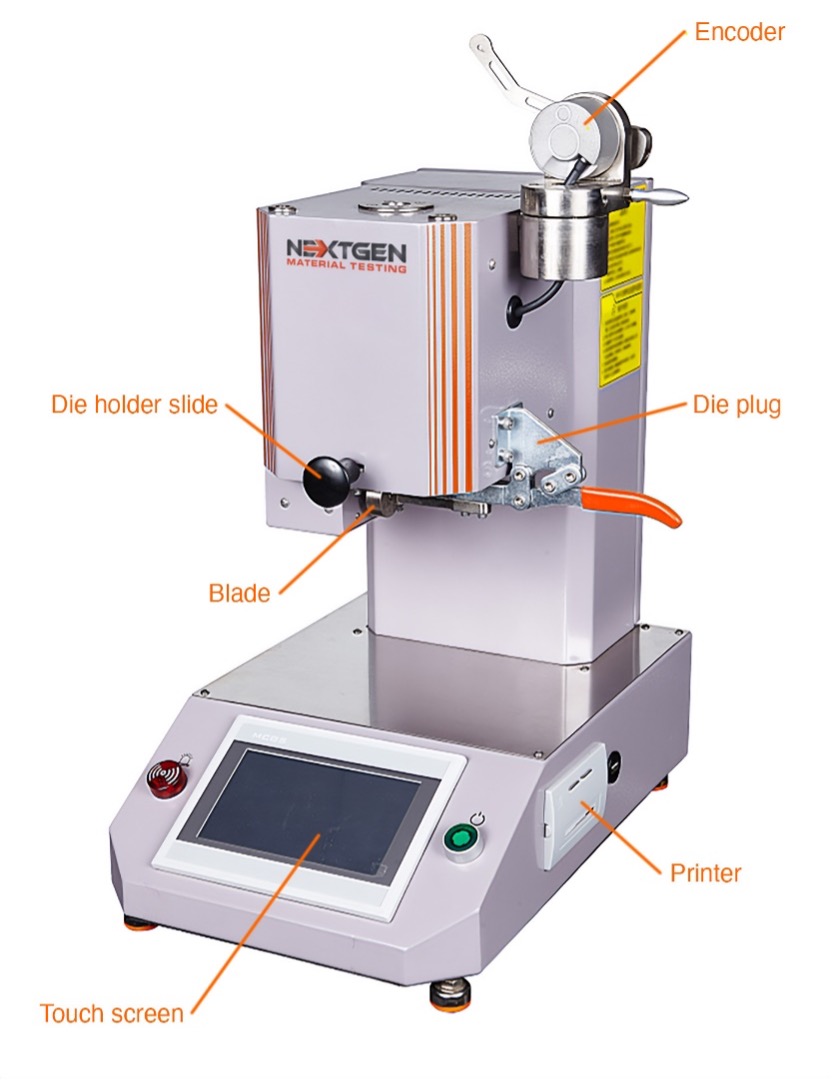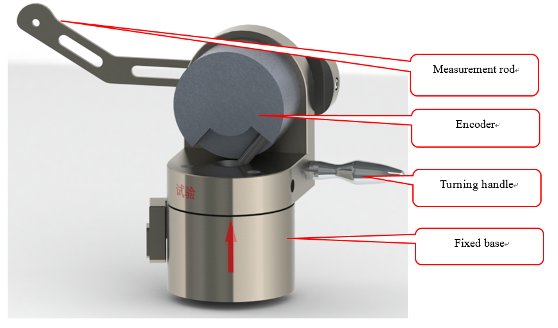Thermoplastics are a type of plastic material known for their ability to melt and be remolded without affecting their physical properties. They are versatile, and are commonly used in many applications including everything from packaging and consumer products to automotive parts and medical devices. Examples of thermoplastics include polyethylene (PE), polypropylene (PP), polycarbonate (PC), and nylon. Their reusability and ease of molding into complex shapes make thermoplastics extremely valuable in manufacturing and engineering.
The Melt Flow Index (MFI) is a measurement in the plastics industry that shows the flowability of thermoplastic polymers when subjected to heat and pressure. This index is vital for quality control and plastic production consistency. A higher MFI signifies a material that flows more easily, affecting the final product’s processing behavior and properties. Understanding the MFI of a thermoplastic material helps manufacturers select the right material for specific applications.
This blog explores the field of thermoplastics and the significance of the melting index, highlighting our latest product – the Melt Flow Indexer. Designed to provide insights into the processing characteristics of thermoplastics, this tool accurately measures melting rates. In this article, we will discuss the features, capabilities, and reasons why our Melt Flow Indexer is an essential tool for anyone involved in the production or use of thermoplastics.
A Closer Look at the Melt Flow Index and Its Importance
First of all, it is necessary to gain a deeper understanding of the Melt Flow Index. The MFI quantifies the ease with which a thermoplastic polymer can flow when heated, defined by the mass of the polymer flowing through a specific capillary under set conditions within ten minutes. This measure is not just a number but a key to understanding how materials behave during the molding process, their application suitability, and overall performance characteristics.
 The MFI is also about the molecular weight and viscosity of the polymer. A higher MFI correlates with a lower molecular weight, indicating a material that flows more easily under pressure. Conversely, a low MFI suggests a higher molecular weight, pointing to a material with greater mechanical strength but requiring more force to flow. This inverse relationship between the MFI and the polymer’s viscosity under test conditions reveals much about the material’s processing capabilities and final application performance.
The MFI is also about the molecular weight and viscosity of the polymer. A higher MFI correlates with a lower molecular weight, indicating a material that flows more easily under pressure. Conversely, a low MFI suggests a higher molecular weight, pointing to a material with greater mechanical strength but requiring more force to flow. This inverse relationship between the MFI and the polymer’s viscosity under test conditions reveals much about the material’s processing capabilities and final application performance.
Polyethylene and polypropylene, for example, are commonly assessed at temperatures of 190°C and 230°C, respectively. This standardization makes sure that materials like these, used extensively in many fields, from automotive to medical devices, meet the stringent demands of their applications. The material selection process, therefore, heavily relies on MFI values to guarantee that the chosen polymer can be effectively processed and will perform as expected in its end use.
Understanding MFI significance extends beyond selecting manufacturing materials. It’s a vital tool in quality control, offering a glimpse into batch-to-batch consistency. By monitoring MFI values, manufacturers can detect variations in production, making sure the final product remains consistent in quality and performance. Furthermore, MFI has an important role in plastic recyclability, providing insights into how recycled materials affect the processing and quality of new products.
What is a Melt Flow Indexer and Its Importance in Plastic Processing
The Melt Flow Indexer is a device designed to measure thermoplastic polymers’ flow characteristics. Such testers provide data by measuring how a material flows under specific conditions, which helps predict how it will behave during processing. The Melt Flow Rate (MFR) or Melt Volume Flow Rate (MVR) obtained from these instruments is instrumental in material selection, process optimization, and quality control at all stages of plastic manufacturing.
The measurement process involves heating the polymer to a molten state and extruding it through a die at a specified weight. The quantity of polymer extruded over a set period, typically ten minutes, determines the MFR or MVR. This reflects the material’s viscosity and flow properties under test conditions. Test conditions, including temperature and applied weight, are standardized according to international standards such as ASTM D1238 and ISO 1133.
Melt Flow Indexers are used in a broad range of applications, from quality assurance in raw material production to final product testing in manufacturing. By determining the melting rate of a polymer, these devices help manufacturers verify that their products meet the required specifications and performance standards. For instance, a high MFR value may indicate a material suitable for manufacturing thin-walled products, whereas a low MFR value might be preferable for applications requiring increased mechanical strength.
A Melt Flow Indexer is more than just a measurement tool. Furthermore, it contributes greatly to research and development by providing insight into the effects of additives or recycled content on polymer flow properties.

Melt Flow Indexer Measurement Standards
Standardization is essential in the measurement of Melt Flow Indexes using special equipment. In addition to facilitating global commerce and the exchange of technical information, these standards provide consistency, accuracy, and reliability measurements across various thermoplastics. Now we will discuss key standards in MFI measurement such as ISO 1133, ASTM D1238, ASTM D3364, BS 2782, DIN 53735, and JIS K7210.
ISO 1133
ISO 1133 specifies the method for determining thermoplastic melt mass- and volume-flow rates. The standard outlines the procedures for conducting these tests using different types of equipment, such as extrusion plastometers or capillary rheometers, under specific conditions of temperature and applied load. ISO 1133 provides guidelines for achieving consistency and accuracy in measuring the flow properties of thermoplastic materials.
ASTM D1238
ASTM D1238 is a standard test method developed by the American Society for Testing and Materials (ASTM) for determining thermoplastic melting rates. This test method involves extruding a molten polymer through a standardized die under a constant load and temperature, and measuring the weight of the extrudate over a specified time. ASTM D1238 provides detailed procedures for conducting these tests using different melt flow indexers. This standard is commonly used in the plastics industry for material selection, process optimization, and quality control.
ASTM D3364
ASTM D3364 is a standard test method for determining thermoplastic materials flow properties using capillary rheometry. This method involves measuring the pressure required to force a molten polymer through a capillary die of known dimensions at various shear rates and temperatures. ASTM D3364 provides guidelines for conducting these tests and analyzing the resulting flow curves to characterize thermoplastic rheological behavior. This standard is particularly useful for understanding how polymers flow under different processing conditions, which is essential for optimizing manufacturing processes and predicting material performance.
BS 2782
BS 2782 is a British standard that covers various test methods for evaluating plastics and polymers’ properties. While it does not specifically focus on melt flow index testing like ISO 1133 or ASTM D1238, BS 2782 includes procedures for testing other key properties of thermoplastics, such as tensile strength, impact resistance, and thermal properties. This standard provides a comprehensive framework for assessing plastic materials’ performance, which is valuable for quality assurance and product development in industries ranging from automotive to construction.

DIN 53735
DIN 53735 is a German standard that specifies methods for determining thermoplastic materials’ flow properties using capillary thermometers. Similar to ASTM D3364, this standard outlines procedures for measuring polymer pressure-flow characteristics through capillary dies of known dimensions at different temperatures and shear rates. DIN 53735 provides guidelines for conducting these tests and interpreting the results to characterize thermoplastic rheological behavior.
JIS K7210
JIS K7210 is a Japanese industrial standard established by the Japanese Industrial Standards Committee (JISC) for determining the melting rate of thermoplastic materials. This standard outlines the procedures for conducting MFR tests using a melt flow indexer apparatus, similar to ASTM D1238 and ISO 1133. JIS K7210 specifies the test conditions, equipment requirements, and calculation methods for determining thermoplastic MFR.
Melt Flow Indexer from NextGen Material Testing Inc.
Our MFR450 Melt Flow Indexer stands out as a high-precision instrument engineered for assessing the melting rate or melt volume rate of thermoplastic materials. This device is invaluable in many sectors, including manufacturing and research, due to its broad measuring range of 0.1g/10min to 2000g/10min, ease of cleaning, compact design, and comprehensive accessories. Its innovative features, like the funnel-shaped feeding port and detachable die support, allow for easy operation and versatility under a range of testing conditions.

Features of a Melt Flow Indexer MFR450
To begin with, the MFR450 has a user-friendly interface that smoothly bridges language barriers. Simplifying the interface allows a greater number of users to operate the device confidently and efficiently without extensive training.
Flexibility is another key feature of our Melt Flow Indexer, providing users with the liberty to switch easily between the mass method and the volume method. This adaptability, coupled with an intuitive test interface, streamlines the operational process, making it accessible even to novices in the field.
The Melt Flow Indexer construction doesn’t compromise on quality. With its components crafted from high-temperature-resistant, low-expansion-coefficient alloy materials and subjected to special surface heat treatment, it offers impressive resistance to high-temperature deformation. This guarantees both the instrument’s durability and longevity, protecting your investment.
Precision temperature control further elevates the Melt Flow Indexer. An Omron temperature control meter achieves exemplary temperature regulation accuracy, essential for consistent and reliable test results. This meticulous temperature control, keeping fluctuations to a minimum, underscores the tool’s commitment to precision.
Incorporating an optical high-precision displacement measuring device, the Melt Flow Indexer guarantees data accuracy. This feature, along with an automatic cutting device that allows for precise time-controlled cuts, means that every test conducted is both precise and reliable.
The integration of a microcomputer controller exemplifies the melding of technology and functionality. It oversees the entire testing process from data processing to results printing. This, combined with a preheating alarm and a meticulously designed weight box for organized testing, perfectly captures the essence of innovation that the Melt Flow Indexer represents.
Structure of a Melt Flow Indexer MFR450
At its core, the Melt Flow Indexer MFR450 is built from a durable alloy construction with a 1.5mm thickness. Its robustness is complemented by a 7-inch color display interface which we have mentioned before, simplifying operations with multi-language capability and real-time feedback.
Key to its performance is the oven, uniquely cast from red copper, guaranteeing uniform temperature distribution, a crucial factor in reliable test outcomes. Precision in measurement is further guaranteed by the incorporation of an imported Baumer encoder, renowned for its accuracy and consistent data reliability.
Adapting to a spectrum of plastic materials, especially those with high melt flow rates, is facilitated by a specialized die plug. This expands its applicability beyond the plastics industry. Convenience is accentuated by a built-in micro printer, enabling instant results documentation. The equipment’s cutting motor, notable for its high repeatability and self-locking function, acts as a bulwark against external disturbances, preventing test integrity from being compromised.
An increase in operational stability is achieved through its wide base structure, minimizing vibrations and potential disruptions during testing. The nitrided piston rod, characterized by exceptional hardness and self-guided performance, supports the precision of test outcomes and ensures testing safety. This careful attention to componentry makes the Melt Flow Indexer indispensable in the plastics industry, offering an efficient, accurate, and reliable method for evaluating material properties essential for quality control and innovation.
Technical Specifications for Melt Flow Indexer MFR450
Understanding the full capabilities of the Melt Flow Indexer MFR450 and appreciating its precision in evaluating plastic materials requires a thorough understanding of its technical specifications. The following is a detailed description of the critical aspects of this advanced melting rate testing tool.
-
Model: MFI452
-
Type: B
-
Temperature Range: 50℃ to 450℃
-
Temperature Variation in 4 Hours: ≤±0.5℃
-
Maximum Permitted Deviation from Required Test Temperature (75mm above the top surface of the standard die): ≤0.25℃
-
Temperature Resolution: 0.1℃
-
Measurement Range: g/10min, Method A: 0.1~50, Method B: 0.1~2000
-
Displacement Error: ≤±0.02mm
-
Displacement Resolution: 0.003mm
-
Displacement Measurement Range: 25.5mm
-
Interval of Temperature Recovering After Changing Testing Samples: ≤3 minutes
-
Resolution of Timing: 0.01 seconds
-
Inner Diameter of Die: Φ2.095±0.005mm
-
Inner Diameter of Cylinder: Φ9.550±0.007mm
-
Weights Accuracy: ≤±0.5%
-
Possible Combination of the Standard Weights: 325g, 1200g, 2160g, 3800g, 5000g, 10000g, 21600g
-
Dimension: 13.78×17.13×25.98 inches / 350x435x660 mm
-
Weight: 71 lbs / 35 kg
-
Power Supply: 220V±10%, AC, 50Hz, 1.5kW
Standard Configurations of the Melt Flow Indexer MFR450
The Melt Flow Indexer MFR450 is equipped with a comprehensive suite of standard configurations, designed to optimize the testing process. Here is a detailed exploration of the standard configurations and their significance in the operational performance of the Melt Flow Indexer:
-
Main Machine: Includes a built-in 7” touch screen and micro-printer, along with essential parts such as the cylinder, temperature controller, heater, and cutting blade. This centralized control unit simplifies operation and data documentation, making testing efficient and user-friendly.
-
Piston Head: Undergoes a Nitriding treatment with Vickers hardness ≥600HV. This treatment significantly increases surface hardness, ensuring durability and resistance to wear and tear during testing.

-
Standard Die: With dimensions of Φ2.095±0.005mm and length: 8±0.025mm, also treated with Nitriding to achieve Vickers hardness ≥700HV.
-
Combined Weight: A set of weights (325g, 1200g, 2160g, 3800g, 5000g) is provided, allowing for versatility in testing diverse materials under different conditions. Compressing Rod, Barrel Cleaning Brush, and Barrel Cleaning Rod: These tools are essential for maintaining the cleanliness and functionality of the machine, ensuring that each test is conducted under optimal conditions.
-
Die Cleaning Tool, Sample Feeder, Funnel, Bubble Level: These accessories simplify the preparation and loading of samples, enhancing the ease of use and efficiency of the testing process.
-
Scraper, Tweezers, Cutting Blade, Fuse, Go No-go Gauge: This set of tools further facilitates the precision and ease of conducting tests, which ensures that each aspect of the test, from sample preparation to execution, is carried out flawlessly.
Optional Accessories for Extending Melt Flow Indexer Functionality
To further augment the Melt Flow Indexer’s capabilities and customize its functionality to specific testing requirements, additional accessories are available.
An encoder for MVR is a must-have accessory for laboratories and manufacturers requiring detailed analysis of material flow characteristics under pressure. It provides additional insights into the material’s behavior, complementing the melt mass flow rate data for a comprehensive understanding of the material’s properties.

For tests requiring heavy-weight applications, an optional 10kg load is available, comprising an additional 5000g dead weight. This allows for testing under increased load conditions, essential for materials requiring higher forces to evaluate their melt flow rate accurately. Similarly, a 21.6kg load option, which includes three more 5000g weights and an additional 1600g dead weight, expands the testing range even further. These weight additions are instrumental in conducting tests on higher-viscosity materials.
The diversification of die diameters used in testing allows for additional flexibility and specificity in testing situations. The Φ1.05 die and Φ1.18 die are notable expansions to the standard Φ2.095mm die, enabling the equipment to accommodate different materials and testing standards. These dies are particularly useful for materials that require narrower channels to accurately measure melting rates.
Melt Flow Index’s Key Role in Thermoplastics
To sum up, the role of the Melt Flow Index in the thermoplastics industry cannot be understated, as it offers valuable insights into polymer materials’ flow characteristics under heat and pressure. This measurement is integral to monitoring quality control, plastic production consistency, and the selection of appropriate materials for specific applications. The understanding and application of MFI are essential for manufacturers and researchers alike, aiming to optimize thermoplastic products’ processing behavior and properties.
Our Melt Flow Indexer from NextGen Material Testing Inc. has been designed as a highly capable and versatile instrument. With its precise measurements, robust construction, and array of standard and optional features, it is an excellent choice for those seeking to accurately assess polymer melting rates. Whether for research and development or quality assurance, the Melt Flow Indexer offers the reliability and precision necessary for thorough and effective thermoplastic analysis.
NextGen Material Testing Inc. is your go-to provider for comprehensive equipment and services in material testing. We are equipped to fulfil all your material testing needs with cutting-edge technology and expert support. Our commitment to quality and customer satisfaction guarantees that you will have access to the most effective tools and knowledge in the industry. If you have questions or require further information about our products and services, please contact us directly or request an online quote. Let us help you advance your material testing capabilities.
